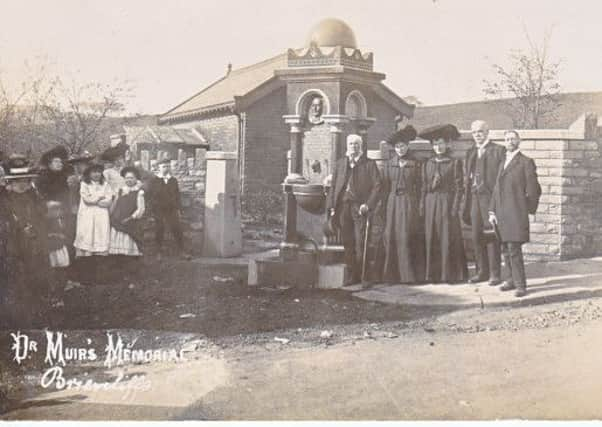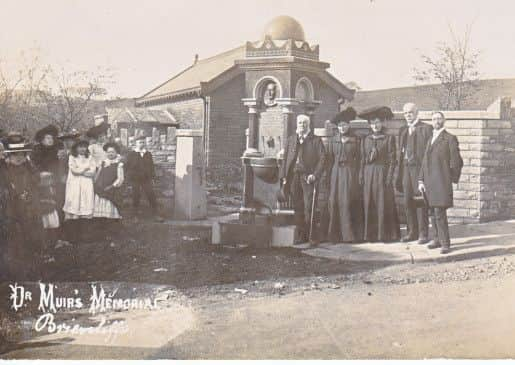The shady past of the genteel game of bowls


I intend to look at a number of sports and pastimes as they have been played in the Burnley area but which column the resultant articles appear in will depend on the number of illustrations I have.
This week I thought I would produce a piece about crown green bowling using some of the images in the Briercliffe Society Collections relating to Briercliffe Memorial Bowling Club which I think you will agree that together they enhance the story.
Advertisement
Hide AdAdvertisement
Hide AdHowever, I am aware there are a number of bowling clubs in Burnley and, given that, I would offer that if any of the other clubs would like to share their stories and pictures I would reserve space for them in one of the columns.


So far as we know, the story of bowling in Briercliffe can be traced only to the 19th Century. The sport itself was first played by the Ancient Egyptians over 5,000 years ago and the first mention in England is a reference to “jactu lapidum”, referring to bowls or shot putting, before 1190. Briercliffe Bowling has its origins in “road bowling” which, though it remains popular in Ireland, seems to have died out in our part of the world.
I mention this latter point because though the first references to the game we now know as “bowls” are made in the 19th Century it is clear that pastimes which encapsulated aspects of the modern game existed many years before that. The game of “road bowls” is a case in point. In the latter 19th and early 20th Centuries road bowls was very popular not necessarily as a sport but as a means through which men could organise gambling.
The game took place not on specially constructed greens but, as the name indicates, on roads. Any road, almost regardless of its condition, might become a site upon which to play games. Roads, even in times when maintenance might have been a problem, were flat and generally unencumbered with weeds and obstacles. They could be used as “pitches”, in the proper sense of the word, for any number of activities. Field stones lying close to a road might easily become implements used in a game.
Advertisement
Hide AdAdvertisement
Hide AdSo it must have been in Burnley where games, such as “cock-shy” (throwing a stone at an object), “stool ball” (an early form of cricket) and football, must have been played on pitches marked on local roads. When a boy I played, with my brothers and friends, a modern version of “stool ball” at Meadow Top (close to the present site of Briercliffe Primary School) and “cock-shy” is not all that different to bowls. In bowls the “ball” it could be a stone would be “bowled” rather than thrown at an object some distance away.
The reference to 1190 is from William Fitzstephen’s biography of St Thomas a’ Becket. He describes the summer amusements of young men in London saying they “exercised in leaping, shooting, wrestling, casting of stones (in jactu lapidum) and throwing of javelins”. As indicated, the reference to “casting of stones” is thought to have been a form of bowls or perhaps shot putting. We cannot be sure which.
By the end of the 13th Century it is clear round stones, then iron balls, were being used in some form of bowls. In 1299 we have the first record of bowling taking place on a particular plot of land. This was at Southampton Old Bowling Green which claims to be the oldest “bowling green” in the world.
Not long after bowling had become so popular it was specifically banned by Edward III and Richard II. They and their Parliaments were concerned men and boys were playing bowls so much they were not practising archery as much as they should have been.
Advertisement
Hide AdAdvertisement
Hide AdOf course proficiency with a bow and arrows was very important to the defence of the nation and this remained significant to Henry VIII. In 1541 he banned the playing of bowls, except at Christmas and then only their master’s house and in his presence, to artificers, labourers, apprentices and servants. Henry was particularly keen bowyers, fletchers, stringers and arrow head makers should not be distracted from their work and if they, along with other labourers, were found in breach of the statute they were subject to fines of six shillings and eight pence on each occasion.
This was pretty serious stuff but Henry was prepared to allow the playing of bowls to at least some of his subjects. Anyone who had land worth in excess of £100 might obtain a licence to play bowls on his own private green. Mind you, these individuals were unlikely to be involved in making bows or arrows. With that kind of money they would have come from the upper parts of society and Plymouth Hoe, the scene of the famous bowling match which was lost by Sir Francis Drake before he set off to defeat the Spanish Armada in 1588, may have been one such site.
The anti-bowls legislation of the Middle Ages and the Early Modern period was not repealed until 1845 by which time bowls in England was merely a minority sport and one which was partly in private hands. In Scotland, however, things were rather different. In that country there were a number of clubs which, as a consequence of William Wallace Russell’s intervention, played to national rules.
In this respect there is a Briercliffe connection and that is that Briercliffe’s local medical practitioner, Dr William Muir, was a son of Kilmarnock which boasted what is believed to be Scotland’s oldest bowling club which founded in 1740. It is not known whether Dr Muir played bowls in his younger days but he came to reside in what was to be the nearest house to Briercliffe Bowling Green.
Advertisement
Hide AdAdvertisement
Hide AdAs indicated, Dr Muir was not responsible for the introduction of bowling into Briercliffe. This very probably came about as a consequence of the popularity of road bowls which was played using the full length of a stretch of road. These roads had to be relatively flat and some distance from highly-populated areas and it is known Robin House Lane, Back Lane and Halifax Road beyond Widdop provided regular pitches for the sport.
Sport it surely was and it is likely the skills of the best road bowlers were much admired. However, what interested the spectators, who often gathered in hundreds, is what they could win a few shillings, and often more, by placing bets on the result of a game and individual shots. The local inns – the Dog and Gun, in Robin House Lane; the Coldwell Inn, in Back Lane and the Travellers Rest near Widdop – also did good trade, most of which was outside the regulated hours they were allowed to be open. This, and the gambling, brought the sport into disrepute and to the attention of the Constabulary who, on several occasions, raided games of road bowls when they were in full swing.
Bowling did not become respectable in Briercliffe until two of the local inns constructed greens. This was not welcomed by everybody, particularly the Non-conformists, but the two inns were the Roggerham Gate, in the village of that name, and the Hare and Hounds at Haggate. Both of the greens have since closed but the sites of both of them remain as large car parks.
The Briercliffe Memorial Green in Burnley Road in Haggate is their successor.